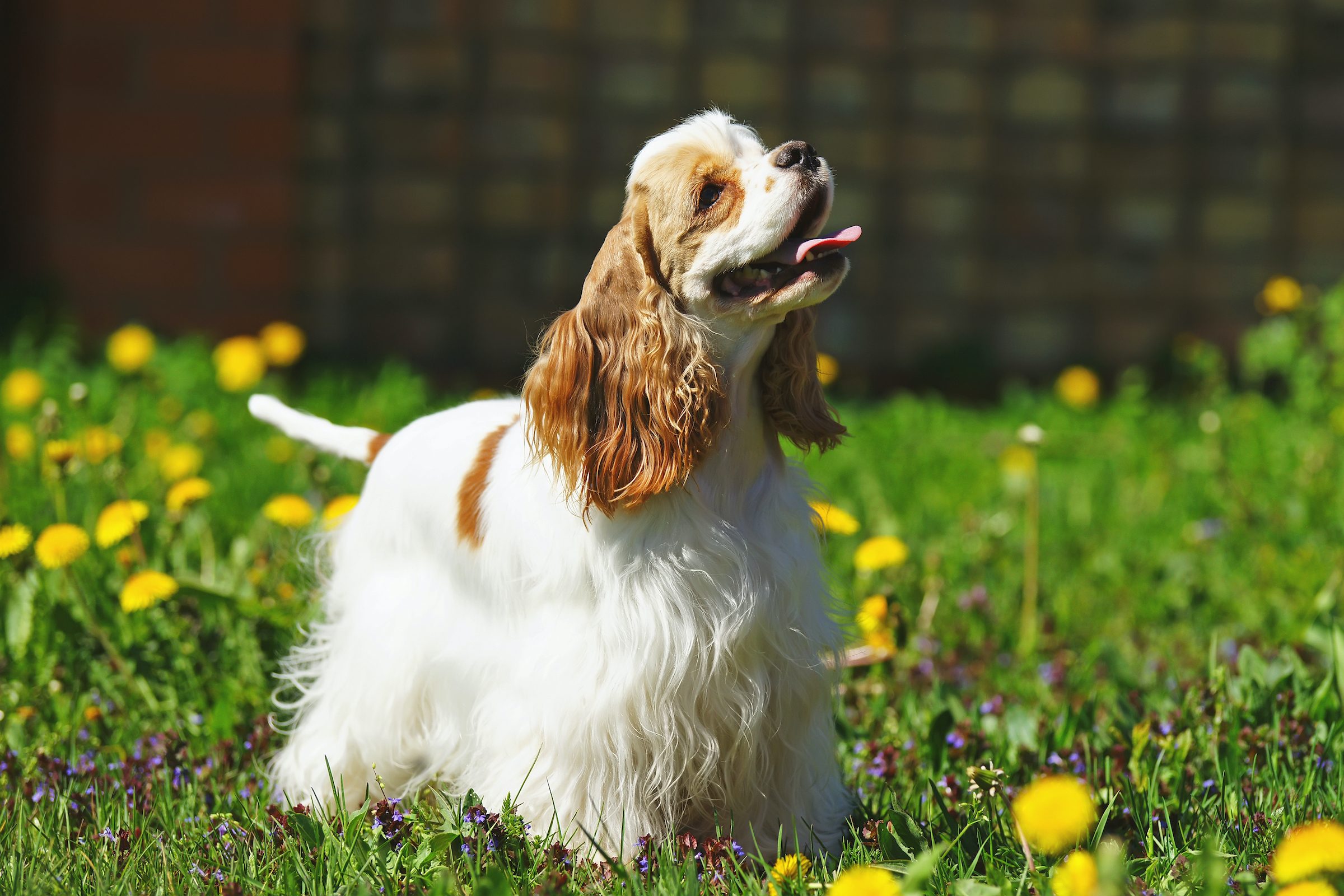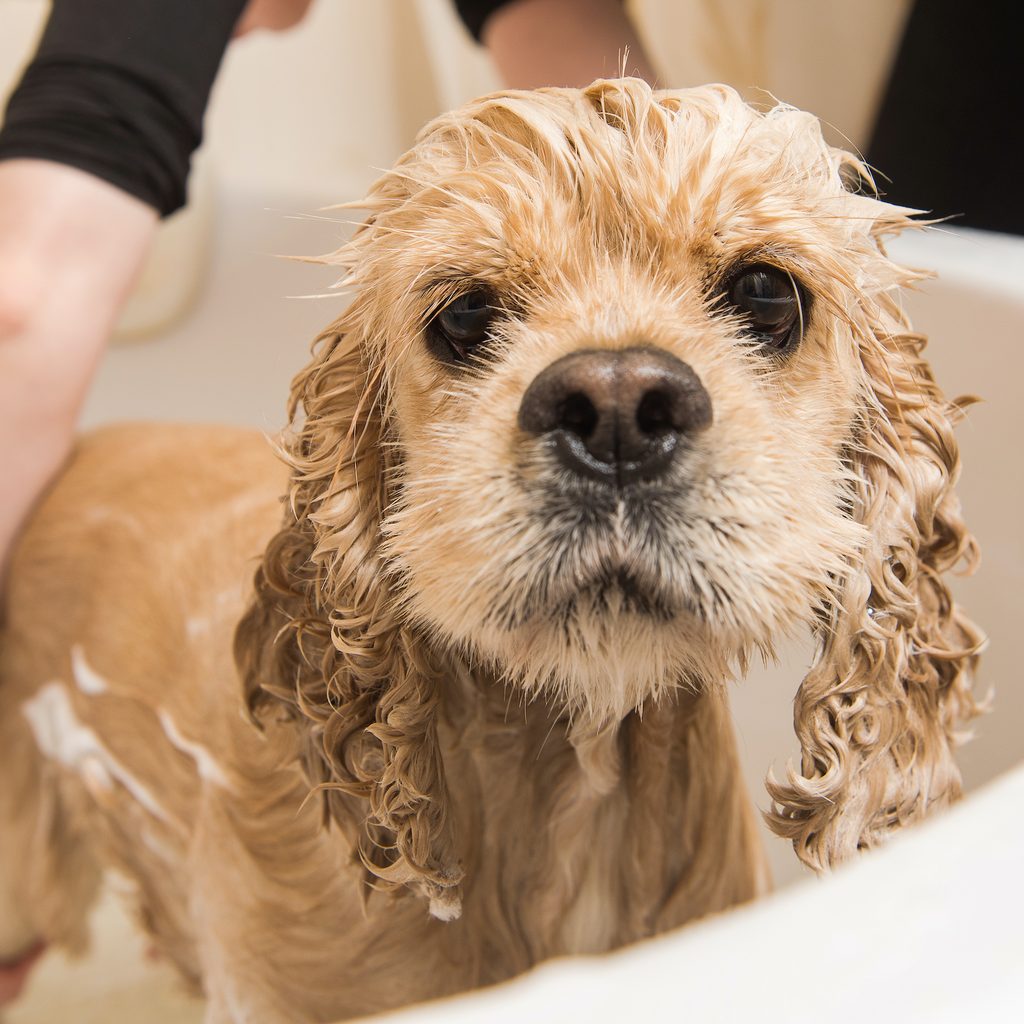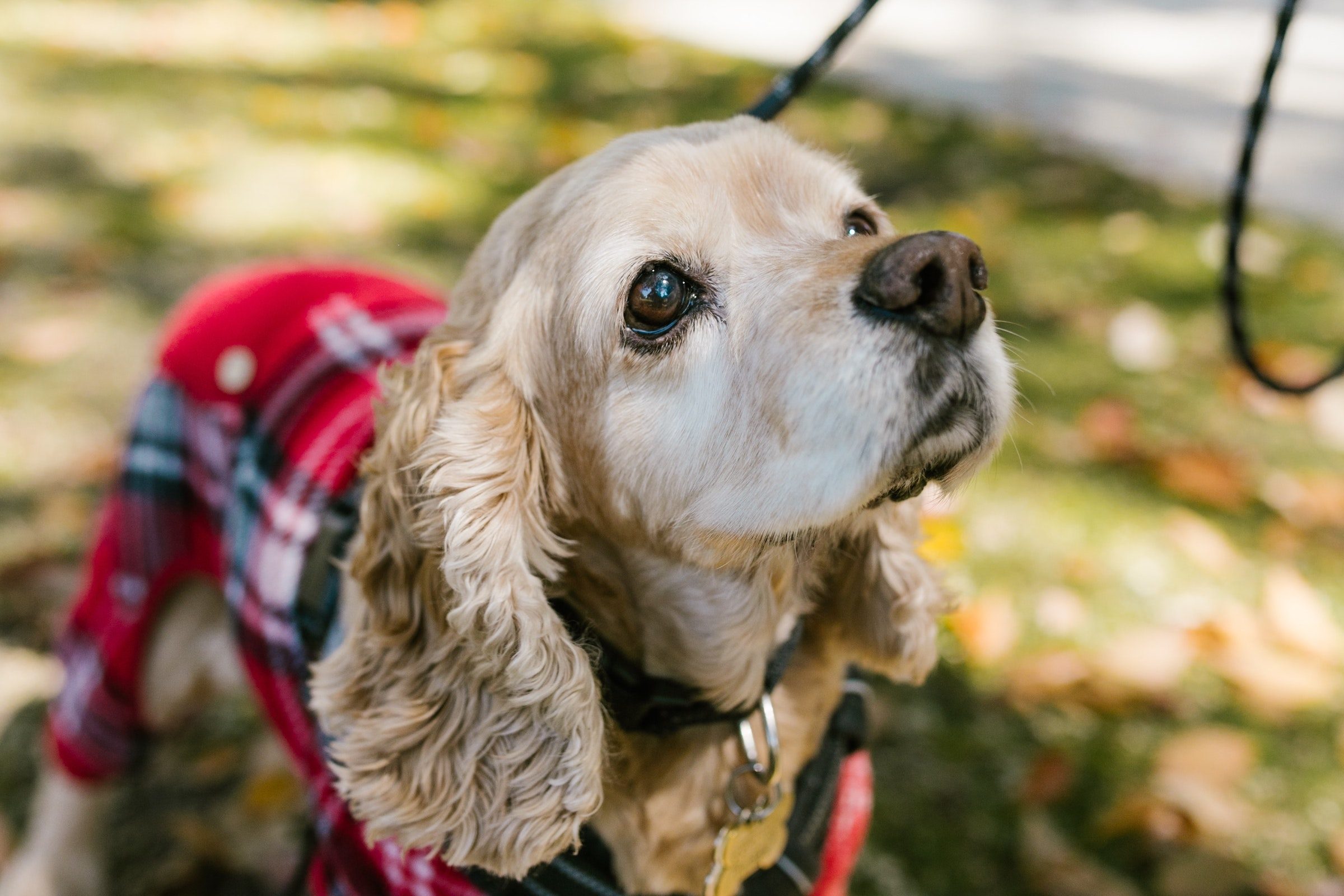When it comes to cocker spaniel care, grooming is one of the most complex pieces. With their long coats and predisposition to skin issues, this breed requires more bathing, brushing, and trimming than others. It’s no wonder dog-show spaniels always look so neat and elegant!
Grooming your cocker spaniel at home might sound daunting, but it can be done. Here are a few tips and tricks to help you get started, but with the right tools and a positive outlook, you and your pup will figure it out. Having a few treats on hand doesn’t hurt, either!

Comb your spaniel’s fur daily (yes, daily)
The key to keeping your cocker spaniel’s fur soft and tangle-free is consistent combing and brushing. Although every three days is the minimum frequency for effective brushing, daily care is the only guaranteed way to keep your pup’s long coat nice and neat. If your cocker spaniel has a “traditional” or “best in show” haircut, their extra-lengthy “skirt” will pick up dust, dirt, and anything else they walk over throughout the day.
Invest in both a comb and a brush
While a slicker brush feels lovely on the skin and coat, it won’t really help untangle mats and knots. Consequently, you should invest in a high-quality metal-pin dog comb with fine or medium-spaced teeth. Some dog grooming tools have bristles on one side and pins on the other, so you’ll need only one brush for every step of grooming.
Don’t comb through mats and tangles
While brushing, you’re bound to run into a few knots that need to be coaxed out of your pup’s coat, and although you may be tempted to, it’s best not to brush right through tangles. Instead, use your metal-pin comb to gently pick through mats beginning at the ends of the fur and working your way up toward the skin.

A high-quality shampoo will help
Because cocker spaniels are at high risk for skin sensitivity (thanks to their thick coats), a shampoo with gentle ingredients might help avoid any itching or discomfort. Shampoos with colloidal oatmeal are known for their skin-protecting properties, though a moisturizing conditioner will make a world of difference in your cocker spaniel’s coat health.
Don’t be afraid to try a few different formulas to see what works best for your dog. Since you’ll be bathing him so frequently, your soap options really do make a difference.
When you think you’re done rinsing, rinse again
If you have thick hair, you’ll be familiar with this struggle. For the same reason you should carefully select your cocker spaniel’s shampoo and conditioner, you should also be sure to rinse off the soap as thoroughly as you can. Any residue, even from gentle ingredients, can irritate the skin as it sits beneath a thick coat of fur, probably gathering dirt along with it.
While combs can also help remove dirt, dry skin, and shampoo residue, your dog will be much comfier if you nip the problem in the bud by rinsing thoroughly in the first place. Not only does it help wash out all soapy particles, but it also removes any excess oil that your cocker spaniel’s skin may be carrying (via Rau Animal Hospital).
Wash and groom your cocker’s ears with extra care
Because of their predisposition toward skin sensitivities, cockers are also prone to ear infections. Your best chance to keep this in line is to learn how to properly wash your dog’s ears, both inside and outside, though you should check the status of each ear during bathing at a minimum. You can always leave this step to a professional cocker spaniel groomer if you prefer.
The skin of your pup’s ears is delicate and thin, so even combing can cause injury if done carelessly. Use your metal-pin comb to gently pick apart any knots, tangles, and mats, though you shouldn’t do anything to an ear that looks like it may be infected.

Find a professional for your cocker’s haircuts
Since cocker spaniels require such frequent, high-quality grooming (including bathing, brushing, and haircuts), it will be worth your time to find a professional groomer who meets your needs. Look for someone with experience grooming cocker spaniels, since this breed has so many specific needs, especially if you want a more traditional haircut for your pup. Not just anyone can do it!
Have a consistent grooming schedule
Most importantly, whatever you do for your cocker spaniel’s grooming, make sure to do it regularly. Skipping a day of brushing can result in multiple mats and tangles, so you can imagine what might happen if your pup misses his coveted grooming appointment. Plus, bathing and brushing your dog is a great way to bond, so why not make a routine of it?
Whether you choose to DIY your cocker spaniel’s coat care, or you have a groomer you know and love, keeping these few things in mind will ensure your dog stays healthy, cool, and luxuriously soft. It takes a bit of time and patience, but your pup will surely thank you.



